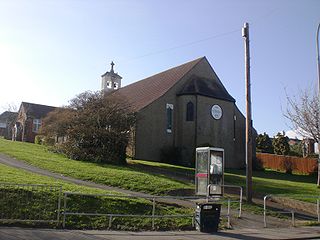Coordinates: 50°43′24″N01°14′19″W / 50.72333°N 1.23861°W

A geographic coordinate system is a coordinate system that enables every location on Earth to be specified by a set of numbers, letters or symbols. The coordinates are often chosen such that one of the numbers represents a vertical position and two or three of the numbers represent a horizontal position; alternatively, a geographic position may be expressed in a combined three-dimensional Cartesian vector. A common choice of coordinates is latitude, longitude and elevation. To specify a location on a plane requires a map projection.
Contents
| St. Mark's Church, Wootton | |
|---|---|
 | |
| Denomination | Church of England |
| Churchmanship | Broad Church |
| Website | www.woottonparish.co.uk/stmarks.php |
| History | |
| Dedication | St. Mark |
| Administration | |
| Parish | Wootton, Isle of Wight |
| Diocese | Portsmouth |
| Province | Canterbury |
| Clergy | |
| Priest(s) | Revd Kath Abbott |
St. Mark's Church, Wootton is a church in the Church of England located in Wootton, Isle of Wight.

The Church of England is the established church of England. The Archbishop of Canterbury is the most senior cleric, although the monarch is the supreme governor. The Church of England is also the mother church of the international Anglican Communion. It traces its history to the Christian church recorded as existing in the Roman province of Britain by the third century, and to the 6th-century Gregorian mission to Kent led by Augustine of Canterbury.

Wootton is a large village, civil parish and electoral ward with about 3,000 residents on the Isle of Wight, first recorded around the year 1086.


















